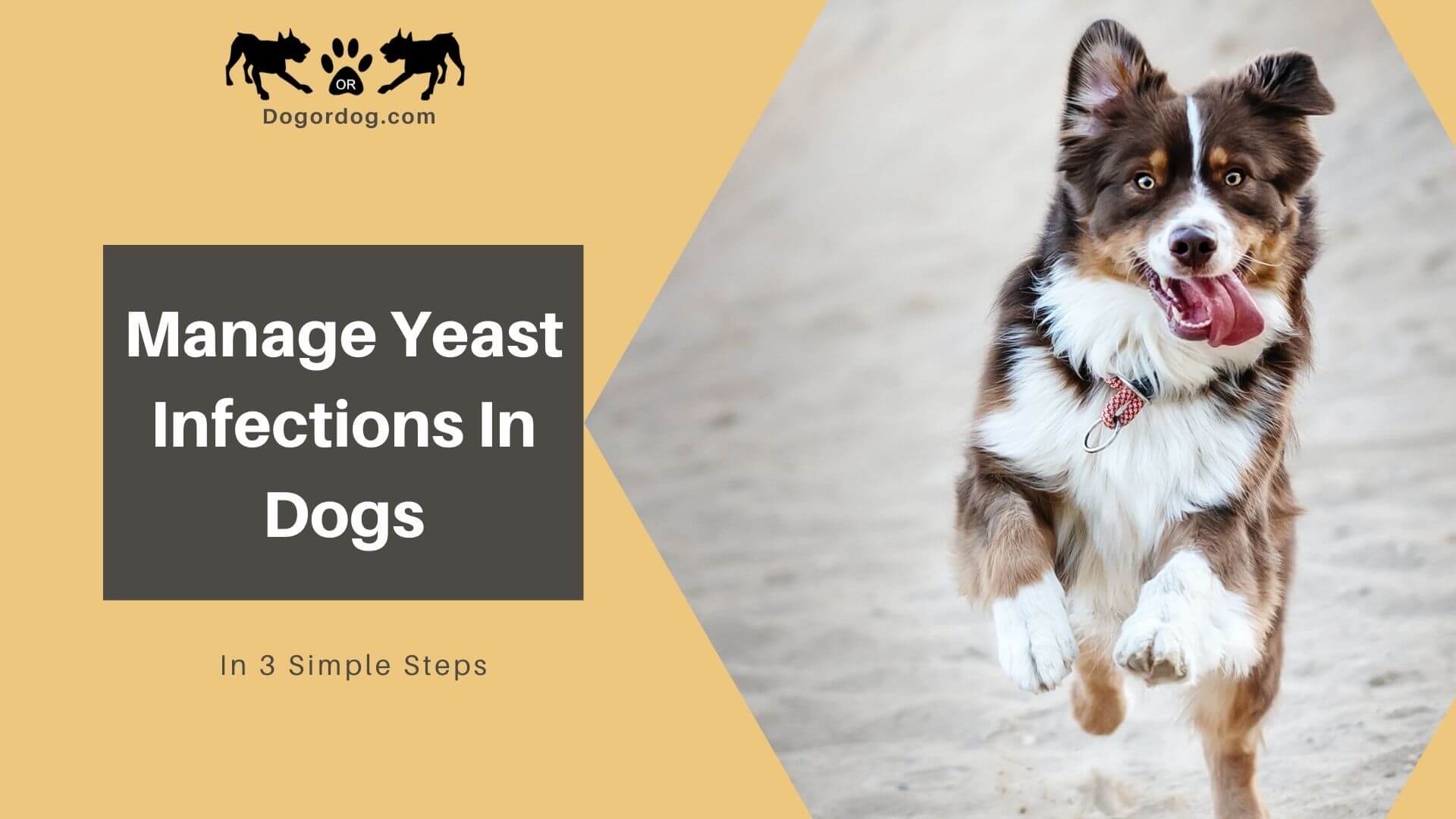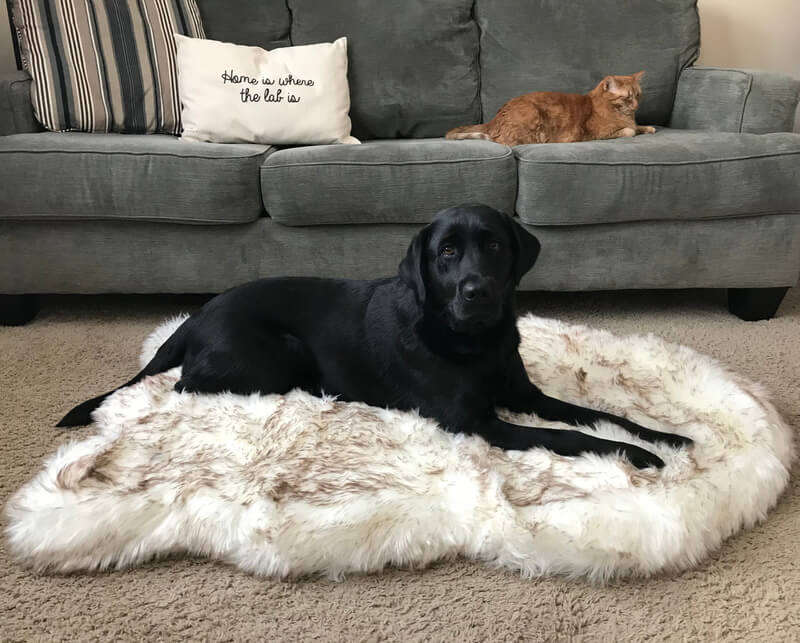
Yeast infections are common in dogs. While the occasional infection is nothing to worry about, when your dog starts showing unusual behavior like excessive licking on his paws, constant scratching on his ears, and blood on the skin, then it’s time to do something.This guide on managing yeast infections in dogs will teach you a thing or two on how to treat it at home, what signs and symptoms to watch out for, and what causes it in the first place.
What is a Yeast Infection in Dogs?
Yeast is present in the dog’s body. They are budding forms of fungi that live in the body and typically do not cause illness.
However, when there is an overabundance of fungus, it then becomes a fungal infection and that’s when it can become a problem. Yeast infection can cause extreme distress and discomfort. And when not treated early or properly, it can become a more serious issue.
Yeast infections can cause a secondary infection that proves more dangerous, and can even reach the liver (check out liver support) and cause damage. No dog owner wants that to happen, so as soon as you notice the early signs of infection, early treatment is key to preventing a more dangerous ailment.
What are the Signs and Symptoms of a Yeast Infection in Dogs?
The best way to know your dog has yeast dermatitis is to visit a veterinarian. A vet can make the proper diagnosis and give you the proper medication. But as an owner, it is your job to know the signs and symptoms of a yeast infection, before you even decide to head to the vet.
Related: Let us pay the vet bill!
Here is a list of the signs and symptoms of a yeast infection in dogs:
1. Constant Scratching
A yeast infection is incredibly itchy. You will notice your dog scratching his ears, belly, face, head, and whatever part of the body with the infection. They will also rub against the floor, on walls, furniture, and other surfaces to get relief.
2. Constant Licking
Licking is one of the ways dogs can find relief for the infected area.
3. Distinct Odor
Yeast can cause a distinct odor that smells like a musty or cheesy scent. Other similar smells include a bag of corn chips, a musty old attic, or a loaf of sourdough bread.
4. Changes in Skin
Because it is basically a skin condition, the early stages of yeast infection can make your dog’s skin pink or red. On the later parts of infection, your dog’s skin can become leathery, grayish or blackish, and thick.Your dog’s skin can also develop scaling, flakiness, and crusting, similar to dandruff.Greasy skin is also an indication of yeast infection.
5. Incessant Head Shaking
Ears are the most common places for a dog to develop a yeast infection (treat ear infection) and they’ll often shake their head or tilt their head to relieve the itchiness. This is especially true if the affected area is the ear canal, which is impossible for them to reach.
6. Hair Loss
If you notice hair loss around the ear or infected area, then it could be a sign of a yeast infection.A yeast infection often occurs in a dog’s body where there is moisture, such as their ears, paws, groin, armpit, and the folds of their face. So watch our for these areas if you suspect your dog to having a yeast infection.
How Do Dogs Get a Yeast Infection?
There are many reasons why dogs get a yeast infection. Let’s take a look at each one so you have an idea of how to prevent it:
1. Underactive Immune System
Dogs that have an underactive immune system can develop an overgrowth of yeast and get an infection.
2. Overactive Immune System
Allergies are a sign of an overactive immune system, and when your dog’s allergic reactions are triggered, that can cause a yeast infection, too.
3. Allergens
Allergens like mold, dust, pollen, and cigarette smoke can lead to a yeast infection. Certain food, especially if they are high in carbs and sugar are also major culprits.
Related: Try Keto Food – low on carbs and no sugar.
4. Seasonal
When the temperature and humidity are high, some dogs can get a yeast infection.
5. Moisture that Remains
When dogs are often bathed and their bodies are not properly dried, such as their ears, groin, armpits, and folds on their face, they can get an infection, too.
6. Certain Dog Breeds
Certain dog breeds are at a higher risk for yeast infections. Breeds that have floppy ears, excess skin folds, and hair growing in the inner ear canal are more prone to yeast infections.Some of these breeds include Labrador Retrievers, Basset Hound, Golden Retrievers, Shih Tzu, Cocker Spaniel, Maltese, Poodles, German Shepherd, and Dachshunds.
Related: Try Dog DNA Test to test your dog for 170 genetic health conditions!
How To Treat It At Home?
There are 3 steps that you can do at home to help treat your dog’s yeast infection.
1
Step 1: Give Your Dog a Good Bath
Because yeast causes a build-up of grease on your dog’s skin, giving him a good bath can help to remove this build-up and clean your dog of the yeast on the surface of the skin.Put a good quality shampoo on his fur, massage it in and leave it for about 10 minutes. You can use benzoyl peroxide shampoo, which is the best choice to remove all the waxy material buildup on our dog’s skin, and it gets deep down into the pores.You can also use an anti fungal shampoo or any medicated shampoo for fungus infections.Give your dog a good bath every 3 to 5 days for a period of 2 to 12 weeks.
2
Step 2: Apply Apple Cider Vinegar on The Skin
Apply apple cider vinegar on the skin to kill most of what is left. White vinegar can work well but apple cider vinegar has other healing properties so it’s a better choice.Mix the vinegar with equal amounts of water and apply it to your dog’s body. Leave the vinegar to dry without rinsing it off.Vinegar helps to restore your dog’s healthy pH levels and prevents overgrowth of yeast.
3
Step 3: Apply Coconut Oil on the Affected Areas
After applying vinegar, it’s time to apply coconut oil on the affected areas. Coconut oil has an antibacterial property that helps rid your dog’s infection of bacteria and other elements. Make sure you get in between the toes and inside the ear flaps.
Other Tips
1. Use Topical Cream
If the skin infection is only on a small area on your dog’s skin, you can use an anti-fungal topical cream.
2. Keep Your Dog’s Paws Clean
Since moisture is one reason why yeast proliferates, always make sure your dog’s paws are dry and clean since this is where his sweat glands are mostly located.
3. Check Your Dog’s Diet
And lastly, your dog’s diet is a big factor in yeast infections. A healthy diet is necessary for good health. Yeast thrives on sugar so if your dog’s diet is packed with carbs, it’s about time you remove it from his meals for now.Avoid potatoes, rice, honey, corn, wheat, and high fructose corn syrup.
Related: Consider MyOllie or Pet Plate – Personalized Meals for dogs!
The Bottom Line
Yeast infection can be dangerous when it causes a secondary infection. It could lead to liver disease, or your dog’s constant scratching and rubbing could cause his skin to bleed, opening up a myriad of other bacterial infections to occur.These treatments can be done at home and if you succeed in killing the yeast and removing them completely, then you will need to take a closer look at what causes the infection to occur in the first place so you can prevent it from happening again.However, when all attempts fail, the best thing to do is go to a vet who can make the proper diagnosis and medical treatment.



